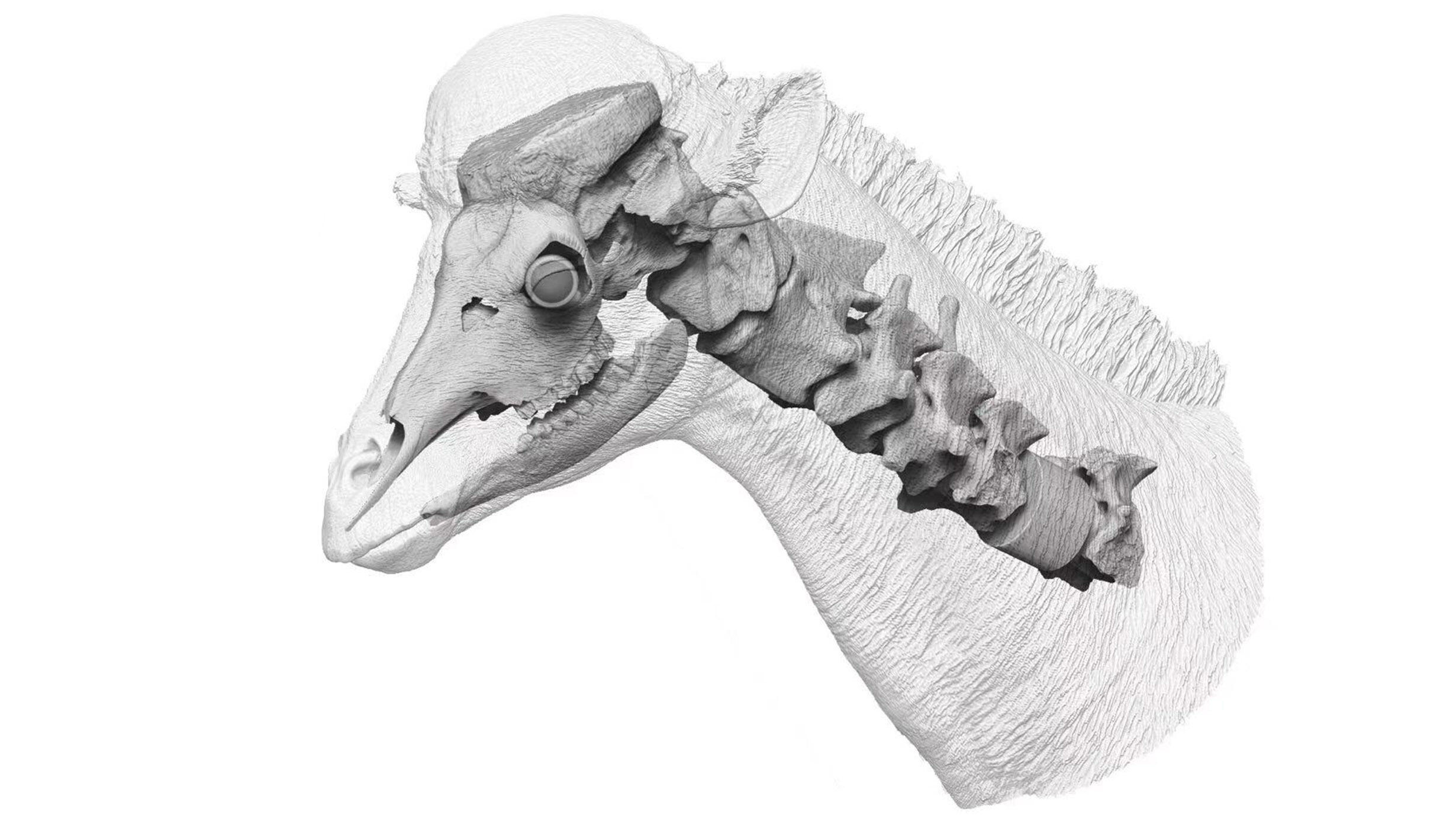 A reconstruction of the skull and vertebrae of Discokeryx xiezhi, an early relative of modern-day giraffes.
A reconstruction of the skull and vertebrae of Discokeryx xiezhi, an early relative of modern-day giraffes.© Wang Yu, 2021/Paleo Topia Studio
In 1996, Museum Curator Jin Meng, then part of a team from the Institute of Vertebrate Paleontology and Paleoanthropology of the Chinese Academy of Sciences, discovered a mysterious fossil skull with thick bones, a bony plate on its forehead, and large cervical vertebrae in the Gobi Desert of northwestern China.
He called the discovery guài shòu, or “strange beast,” a name that has stuck for more than 20 years. Now, Meng and a team of collaborators have given it an official name—Discokeryx xiezhi, named for a mythical unicorn-like creature.
In a study out this week in the journal Science, they also found that, as remnants of an early relative of modern-day giraffes, the fossils provide important details about the evolution of long necks.
“How did the giraffe’s long neck evolve? This question has fascinated scientists for years, all the way back to Darwin and Lamarck, two of the founding fathers of evolution,” said Meng, a curator in the Museum’s Division of Paleontology. “Darwin, Lamarck, and many scientists since have agreed that the giraffe evolved a long neck to get to higher foliage and thus survive its competition, but as we’ve learned and discovered more, we’ve found an alternative explanation.”
Giraffes are the tallest land animal and largest ruminant on Earth, with an elegant form that is unique in the animal kingdom. Like other mammals, giraffes have seven cervical vertebrae, but the average length of each vertebra is over 30 centimeters (nearly 12 inches).
By comparison, even-toed ungulates of similar weight, such as buffalo, have cervical vertebrae that are only about 5 centimeters (2 inches) long.
© AMNH
Previously, the common assumption among scientists was that giraffes’ long necks evolved to help them reach an otherwise untouchable source of food—treetop leaves.
But in the mid-1990s, a set of researchers offered a “necks-for-sex” hypothesis based on the behavior of male giraffes, which compete for dominance by swinging their necks and delivering blows to each other with their heavy skulls, small horns, and stout ossicones on their heads.
The researchers proposed that the result of these head-bashing competitions is the evolution of ever-longer necks. The idea has been hotly debated.
Nearly 20 years since Meng’s discovery, analyses were renewed on the fossils—as well as on others found in the time since using high-resolution CT scans and other techniques. The scientists found that the peculiar morphological characteristics of D. xiezhi show an adaptation for fierce head-butting behavior.
The researchers also studied tooth enamel isotope data from the fossils, which suggest that the species also likely filled a specific ecological niche in the ecosystem unavailable to other today’s herbivores—and that that early giraffoid evolution is more complex than previously known. In addition to competition for food, sexual combat likely played an important role in shaping the group’s unique skull and necks.
“Feeding may be an evolutionary outcome, sex may be the pathway that leads to this outcome, and, above all, each species must find its place in the ecology if it is to survive in a challenging environment,” Meng said.